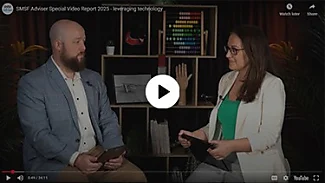ATO reaffirms SMSF auditor independence
The ATO has released its long-awaited guidance on SMSF auditor independence, reaffirming the requirements set out in APES 110 Code of Ethics for Professional Accountants (including Independence Standards) (the code).
As the revised code states, SMSF auditors must apply the conceptual framework that identifies, evaluates and addresses independence threats.
To comply, SMSF auditors must exercise professional judgement as well as remain alert for new information and any changes in facts and circumstances.
SMSF auditors should be applying a litmus test by asking themselves whether they would have any hesitation in qualifying an audit report or writing up an adverse finding.
By way of example, if an SMSF auditor identified a reportable compliance breach for a new client and dealt with it through a management letter, then independence is compromised.
SMSF auditor independence threats
The ATO has outlined several scenarios that will always give rise to independence threats and cannot be eliminated. Under these situations, the SMSF auditor must decline or end the audit engagement.
One of the most interesting is that an auditor’s firm (or network firm) cannot undertake the management responsibility for the fund where the audit continues in-house. These include activities, decisions and judgements for which trustees are ultimately responsible, ranging from setting policies and strategic direction to ensuring compliance with the SISA and SISR.
Most importantly, the firm must demonstrate and document that the trustee has the relevant skills, knowledge and experience to remain responsible for their decisions. The trustee is also required to oversee the service and understand the objectives, nature and results of the firm’s services.
Practically, the firm can no longer provide administrative or operational advice to trustees, such as offering tax minimisation strategies, advising when to commence a pension and making decisions about maximising contributions caps.
Data feeds
The use of data feeds that help automate financial statements also falls under the banner of management responsibility. As previously reported by ASF Audits, the firm can have no decision or judgement regarding the set-up and maintenance of data feeds, as it must firmly remain the trustee’s responsibility.
Situations that the firm must avoid include:
- selecting the accounting software for the data feeds and set it up for the trustee(s)
- establishing the general ledger and deciding how the transactions captured by the data feeds are to be coded and classified
- checking the data from the feeds used in the financial statements and tax calculations to ensure it is correct
- confirming that all transactions recorded from the feeds have been accurately reflected in the fund’s accounts — for example, where contributions and earnings are automatically allocated to a members account
- monitoring the data feeds to ensure they are operating correctly
- being accountable for any mistakes in preparing the statements from the data feeds
According to the ATO, firms will find it very difficult to substantiate compliance with this requirement.
Reciprocal auditing arrangements between firms
A reciprocal arrangement is where two firms prepare the financials in-house and enter into an agreement to audit each other’s SMSF clients.
Both the ATO and ASIC have these arrangements firmly on their radar as an area of concern. They give rise to self-interest, intimidation and familiarity threats, which must all be addressed.
An appropriate safeguard would be to spread out the referral of clients to several different SMSF auditors, which would minimise the dependence on one source. Another might include engaging external quality control reviews or external consultation on critical audit judgements. An SMSF auditor could also consider increasing their client base, which is not always the easiest thing.
The most significant issues from self-interest and intimidation threats are the total fees generated from one client or multiple clients referred from one source, representing a large proportion of the audit firm’s total fees.
The reason is that the audit firm is dependent on the source and is concerned about losing the clients.
ATO benchmark
While the code is silent on the number of referral sources or a set percentage of fees from one or more referral sources required to reduce independence threats to an acceptable level, the ATO has been more vocal.
In its new guidelines, the ATO considers that well-established firms in operation for more than two years would not have an independence threat if the fees generated from one referral source are less than 20 per cent of the firm’s total fees.
However, SMSF auditors who rely on the ATO’s 20 per cent benchmark, as a rule, to enter into a reciprocal arrangement will be sadly disappointed. It is not a get-out-of-jail-free card, and they will quickly discover that it refers to just one of the many independence threats that need to be reduced to an acceptable level.
The ATO will be amending their online independence guidance statement to clarify that the 20 per cent benchmark refers only to fee dependency issues.
Other factors relevant to evaluating threats
Each firm will be required to evaluate the many factors relevant in assessing the significance of independence threats, bearing in mind that the “reasonable and informed third-party test” must be passed at each step of the way.
The type of threats could include the firm’s operating structure and services, how the firms communicate with each other, their audit integrity, technical competence, and level of audit fees, to name but a few.
Once again, it is critical to ensure that there are no circumstances that will compromise professional judgement and that the perception of independence in mind and appearance is present at all times.
Audit pooling arrangements, in particular, will be subject to extra scrutiny by the ATO, as they are considered an extension of reciprocal arrangements. There are more potential threats involved in structuring a group of firms with a higher risk of non-compliance.
Conclusion
The ATO has reaffirmed SMSF auditor independence by providing a comprehensive blueprint on their expectations of applying the revised code’s conceptual framework and meeting the new independence requirements.
While it is not an exhaustive list, using professional judgement will continue to ensure that all arrangements are within the spirit of the code.
With the 1 July 2021 deadline fast approaching, time is quickly running out.
The best practice for SMSF firms is to take the first step and review their current situation. It will then become clear whether they need to transition to an outsourcing arrangement that ensures continued compliance with the new independence standards.
Shelley Banton, head of education, ASF Audits

Tony Zhang
Tony Zhang is a journalist at Accountants Daily, which is the leading source of news, strategy and educational content for professionals working in the accounting sector.
Since joining the Momentum Media team in 2020, Tony has written for a range of its publications including Lawyers Weekly, Adviser Innovation, ifa and SMSF Adviser. He has been full-time on Accountants Daily since September 2021.
 That's great but when are Professional Standards going to be enforced on ATO accountants who blatantly breach professional standards with impunity on an ongoing basis.0
That's great but when are Professional Standards going to be enforced on ATO accountants who blatantly breach professional standards with impunity on an ongoing basis.0 Surely there has to be a way for related party shareholders of specialist companies (tax & audit) to manage the independence threats for legitimate firms in the SMSF space.
Surely there has to be a way for related party shareholders of specialist companies (tax & audit) to manage the independence threats for legitimate firms in the SMSF space.
Does anyone know of any businesses that offers advice and or compliance oversight into yet another layer of ever increasing complexity that we all have to absorb whilst trying to run a business?0 The bench mark of 20% set by the ATO from anyone referral source of Total Income of the Firm. Many accounting accounting firms have a number of income sources other than SMSF Audits. Or is the ATO referring to the firm's SMSF audit income.0
The bench mark of 20% set by the ATO from anyone referral source of Total Income of the Firm. Many accounting accounting firms have a number of income sources other than SMSF Audits. Or is the ATO referring to the firm's SMSF audit income.0













